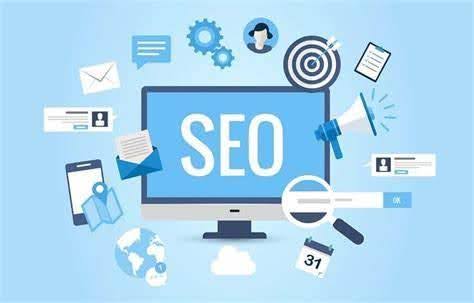8 Different Types of Web Design Services
In today’s digital age, having a professional and visually appealing website is essential for businesses to establish a strong online presence. The field of web design encompasses a wide range of services that cater to diverse business needs and goals. From creating stunning visuals to enhancing user experience, web design services play a crucial role in building successful websites.

In this guide, we will explore eight different types of web design services and how they contribute to the overall effectiveness of a website.
1. Responsive Web Design
With the increasing use of mobile devices, responsive atlanta web design company has become a necessity. Responsive design ensures that a website adapts seamlessly to different screen sizes and resolutions, providing an optimal viewing experience across desktops, tablets, and smartphones. A responsive website not only enhances user experience but also improves search engine rankings, as search engines prioritize mobile-friendly websites.
2. User Interface (UI) Design
User Interface (UI) design focuses on creating visually appealing and intuitive interfaces that enhance usability and user engagement. UI designers carefully consider factors such as color schemes, typography, layouts, and interactive elements to create a cohesive and aesthetically pleasing user interface.
By incorporating principles of effective design, UI designers ensure that users can navigate the website effortlessly and have a positive interaction with its features.
3. User Experience (UX) Design
User Experience (UX) design is concerned with optimizing the overall experience users have when interacting with a website. UX designers conduct thorough research to understand the target audience and their needs, preferences, and behaviors.
They then use this information to design intuitive navigation, logical information architecture, and seamless interactions that provide a satisfying and meaningful user experience. The goal is to make the website easy to use, engaging, and capable of fulfilling user goals efficiently.
4. E-commerce Web Design
E-commerce web design focuses on creating visually appealing and user-friendly websites specifically tailored for online businesses. They pay special attention to product showcases, shopping carts, secure payment gateways, and smooth checkout processes. They aim to create a seamless and enjoyable online shopping experience for customers, ultimately driving conversions and increasing sales.
5. Graphic Design
Graphic design is an integral part of web design that involves creating visually compelling elements such as logos, banners, icons, infographics, and other graphical assets.
Designers utilize their artistic skills and knowledge of design principles to create visually striking and brand-consistent elements that enhance the overall aesthetics and appeal of a website. Well-designed graphics can effectively convey information, evoke emotions, and leave a lasting impression on visitors.
6. Branding and Identity Design
Branding and identity design focus on creating a consistent and memorable visual identity for a business or organization. Web designers specializing in branding work closely with clients to understand their brand values, target audience, and desired brand image.
They then create a visual identity that encompasses elements such as logos, color palettes, typography, and imagery, ensuring that the website reflects the brand’s personality and resonates with its target audience.
7. Content Management System (CMS) Development
Content Management Systems (CMS) provide businesses with the ability to manage and update their website content easily. CMS developers specialize in customizing and implementing CMS platforms such as WordPress, Drupal, or Joomla, based on the specific needs of a business. They ensure that the CMS is user-friendly, scalable, and secure, empowering businesses to maintain and update their website content efficiently without requiring extensive technical knowledge.
8. Website Maintenance and Support
Website maintenance and support services are essential for the continuous health and functionality of a website. Web design agencies often offer ongoing maintenance and support to ensure that websites remain up-to-date, secure, and optimized.
This includes regular backups, security updates, bug fixes, performance optimizations, and technical support. By entrusting the maintenance and support tasks to professionals, businesses can focus on their core operations while ensuring the smooth functioning of their website.
Conclusion
Web design services encompass a wide range of specialized areas that contribute to the creation of visually appealing, user-friendly, and effective websites. From responsive design to UI/UX considerations, e-commerce design to graphic design, each type of service plays a crucial role in enhancing the overall user experience and achieving business goals.
By understanding these different types of web design services, businesses can make informed decisions and collaborate effectively with web design professionals to create websites that leave a lasting impression on their target audience.






